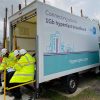Calls for New Pre-Brexit Rural Broadband Strategy from UK Gov
The Rural Services Network (RSN) are today leading calls for the UK government to produce an “urgent comprehensive strategy for rural areas” in preparation for Brexit, which among other things demands more investment to boost the “full fibre” (FTTP) broadband roll-out and stronger mobile coverage targets.
According to Ofcom’s most recent report (here), some 94% of the United Kingdom can access a fixed line “superfast broadband” (30Mbps+) ISP network, which rises to 97% in urban areas and falls to 74% in rural locations. Similarly geographic 4G mobile coverage in rural areas from all operators is 97% in urban locations, but only 62% for rural areas.
Clearly some big gaps exist and RSN’s new report warns that rural towns and villages “simply cannot afford to wait any longer for politicians to take their concerns seriously and act on them.” The group adds that the deep-seated challenges to the sustainability of rural communities and service delivery in rural areas “have been inadequately addressed by those in power for too long and the situation has become urgent.”
Advertisement
We should point out that this campaign isn’t just looking at broadband and mobile connectivity. The report also highlights problems with higher house prices, the brain drain as skilled people move away from rural communities, the rising withdrawal of bus services, weaknesses in health funding and so forth. But our focus will naturally be on the digital infrastructure side of things.
Graham Biggs, CEO of the Rural Services Network, said:
“Rural Communities are frequently overlooked in a policy environment dominated by urban thinking and policy concerns. This often means communities either miss out on the benefits or experience unintended consequences from policies which are poorly thought-through from a rural perspective.
It is time for this ‘rural mainstreaming’ to stop. People living in ours towns and villages simply cannot afford to wait any longer for politicians to take their concerns seriously and act on them.
If rural communities are to be sustainable, the Government must seize this opportunity to work with communities to produce a long-term, funded rural strategy which recognises the contribution rural areas make and have the potential to make to the wellbeing and prosperity of the nation as a whole.”
In fairness the £1.6bn+ state aid supported Broadband Delivery UK programme is continuing to expand the coverage of superfast broadband lines (potentially reaching 98% by the end of 2020). On top of that Ofcom are in the process of introducing a new 10Mbps+ Universal Service Obligation (USO) to help those in the final c.2% of premises (here).
The Government have also committed to extend geographic mobile network coverage to 95% of the UK by 2022 and Ofcom’s forthcoming auction of the 5G friendly 700MHz radio spectrum band includes supporting coverage obligations (here). Lest we forget the aspiration to achieve nationwide coverage of ultrafast “full fibre” (FTTP) broadband by 2033.
Nevertheless the campaigners want to see the Government go even further and they’ve outlined several key recommendations for digital infrastructure.
Advertisement
The Recommendations
A USO that is fit for purpose:
In the short term, the planned introduction (in 2020) of a broadband Universal Service Obligation (USO) is welcome. However, the proposed USO level, at 10 Mbps, risks becoming out-of-date. Ofcom should review this prior to its introduction, not least because there will be pressure to leave the USO unchanged for a while to bed down.
When the USO is applied decisions about upgrading networks should be taken on a value for money basis and not just a cheapest solution basis. Whilst the cheap option may get premises or areas just over the 10 Mbps threshold, a value for money solution could deliver much higher speeds that result in more sustained benefits.
A focus on full fibre roll out:
The Government’s Future Telecoms Infrastructure Review (FTIR) is welcome, setting a longer term goal for the nationwide roll out of full fibre networks. That technology should avoid rural areas falling behind again as demand for bandwidth continues to grow. Significant public funding, as indicated by the FTIR, is clearly justifiable given the market failure that would exist otherwise, with many rural areas considered uncommercial for the roll out.
The plans for a rural first (or outside-in) approach to using public funds are exactly what are required. Further announcements, how the goal will be turned into practice, will be eagerly awaited. The upcoming Spending Review needs to allocate funding, building on the £200 million mentioned in the 2018 Budget.
A drive to connect rural businesses:
Evidence from the Rural England and SRUC survey of rural businesses is that those with a superfast connection realise more business benefits and face fewer digital challenges than those still dependent on a slower connection. The survey report concludes that, in order to capitalise on the public investment in superfast networks, more businesses should be encouraged to upgrade (where they have the option to do so).
Government and local broadband partnerships should reinforce their efforts to promote the business benefits. This could include finding rural businesses which are already adopters and are willing to act as broadband champions among their peer group. Alongside this should be training and resources to help rural SMEs improve their digital skills.
A review of mobile connectivity:
Whilst mobile connectivity is improving, rural areas lag behind and there are particular rural issues, such as signal strength inside premises and signal loss for those on the move. Previous targets set for mobile network providers (as part of their licences) proved insufficient. It is imperative the regulator, Ofcom, sets sufficiently stretching targets when auctioning the next round of licenses.
These should apply equally to all awarded a licence and ensure many more rural communities gain access to mobile internet/data services (as well as basic voice/text services). The sharing of phone masts by providers, to address gaps in provision, should be supported and, if necessary, regulated for. Looking ahead, it is crucial that rural communities feature prominently in plans to develop 5G networks.
On the USO it’s worth pointing out that 10Mbps is a minimum speed and most of the c.600,000 premises set to benefit from it should generally expect something faster. Setting the USO higher than 10Mbps is also a bit of a tedious game to play as it could result in market distortions (e.g. overbuilding alternative network ISPs) and placing higher costs on the industry, which would invariably be passed on to consumers as price rises.
As for the FTIR and calls for more clarity or funding for the proposed “outside-in” approach to deployment. The Government has just outlined how some of the first £200m will be used in order to bring gigabit broadband to rural schools and hopefully surrounding homes (likely supported by connection vouchers). But this is still short of the up to £5bn in public investment that the FTIR suggested may be needed to tackle rural areas.
The difficulty for the Government is that at this point they’re clearly trying to encourage private investment to do as much of the work as possible through strategic funding and softer rules. All this could be undermined by suddenly placing a huge lump of public investment on the table, just as commercial deployments are getting into their stride.
On the other hand only a very few providers have managed to create a viable economic model of FTTP deployment in remote rural areas and there’s an argument to say that, if left up to them alone, achieving complete coverage could take several decades (an unacceptably long wait). But for now we’d expect the current government to continue their approach of encouragement, with gradual but targeted funding increases.
Advertisement
Nevertheless, eventually somebody will have to come back to this problem and place a much bigger wad of money on the table, particularly if they intend to achieve the 2033 aspiration on time. The obvious question mark is whether or not this will occur under the current government or be left up to a future administration. As leaders and parties change, so do policies.
Mark is a professional technology writer, IT consultant and computer engineer from Dorset (England), he also founded ISPreview in 1999 and enjoys analysing the latest telecoms and broadband developments. Find me on X (Twitter), Mastodon, Facebook, BlueSky, Threads.net and Linkedin.
« RHM Telecommunications Partners ITS Technology for Full Fibre


















































Comments are closed